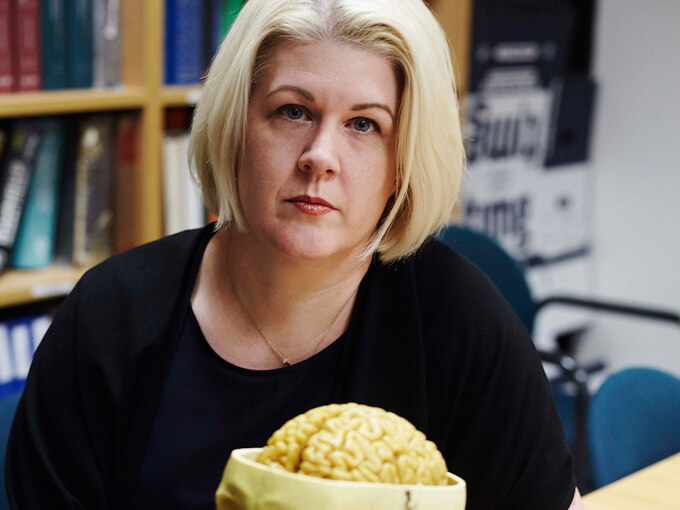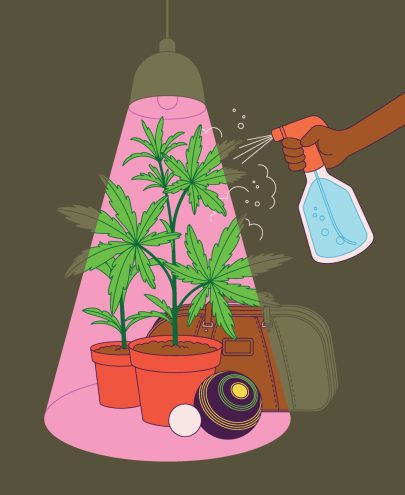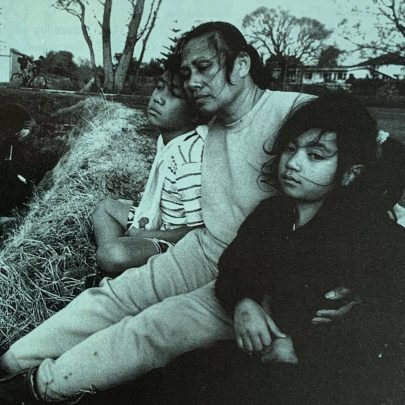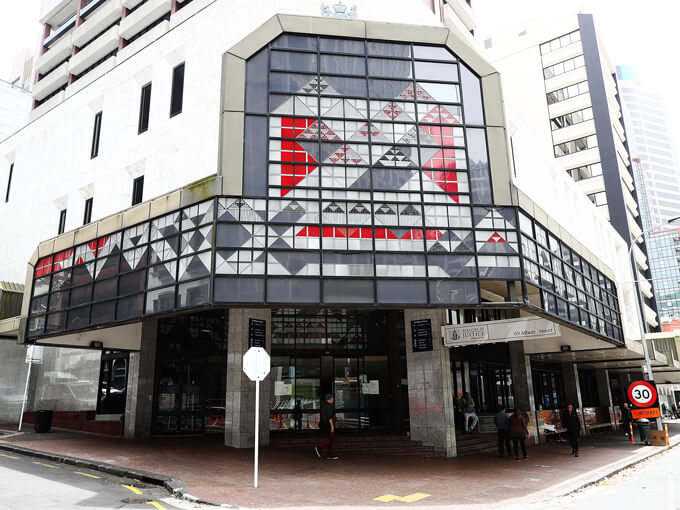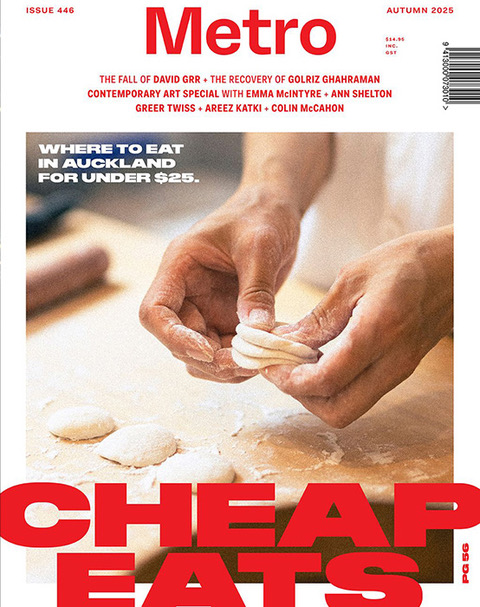Oct 4, 2017 Crime
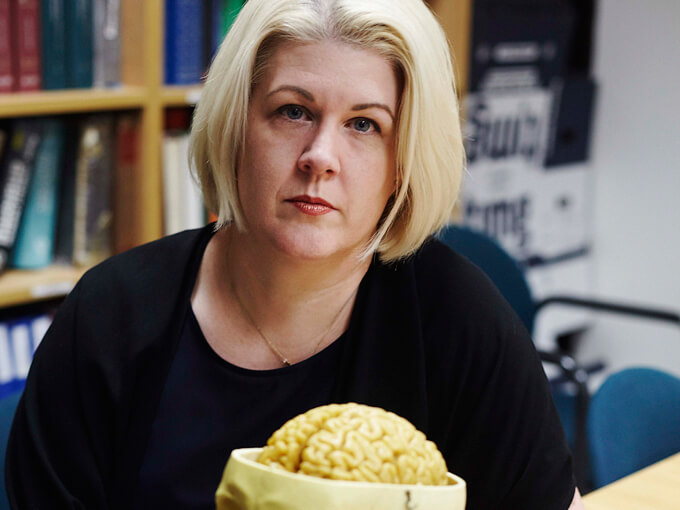
A forensic pathologist needs an inquiring mind, a strong stomach and, sometimes, a good set of tree loppers. Joanna Glengarry tells Metro about the responsibility of telling dead people’s stories.
The scene: A car crash in West Auckland, head-on into a wall. Driving conditions are good. Bright sun, dry surface. Skid marks where the car left the road indicate excessive speed is a factor.
A young man is dead in the driver’s seat, while his male passenger sits nearby with minor injuries, being comforted by police.
Shocked neighbours have come out in force to rubberneck. Meanwhile, a youngish woman with short blonde hair and a cheerful disposition is assisting the police. She takes a look at the car and the dead man inside it, tilting her head this way and that while she computes the scene, and takes a surreptitious look at the injured passenger before escorting the lead investigator out of earshot. “Your passenger was the driver,” she says definitively. “He’s pulled his mate into the driver’s seat.”
Challenging crime scenes are a normal part of forensic pathologist Dr Joanna Glengarry’s life. “The ones I enjoy are the ones that blow away your assumptions, that aren’t what they seem.”
Glengarry’s small office in the forensic pathology department at Auckland City Hospital is down the end of a narrow hall adorned with photographs of pathology teams, from the 80s and early 90s, perhaps: doctors in flares with long hair, large glasses, lab coats, bad knitwear. Their smiles hint at a professional life defined by having one foot in the land of the living, one in the land of the dead, and the gallows humour required for the role in between. Her office walls are lined with books, medical texts, piles of perfectly arranged files, a pinboard with pictures of her three-legged, ginger rescue cat Monty, and the treasured qualifications framing more than 17 years of academic study. She’s soon leaving this office for another at Melbourne’s Institute of Forensic Medicine.
Glengarry exudes competence and capability, a mind used to deep and detailed consideration. She returns to that fatal road crash in West Auckland: “Our part is to find out if there’s anything in the driver that could have caused death. Alcohol, drugs, natural disease. You’re trying to match up the pattern of injuries to the collision as well. The types of injuries people get when a side windscreen shatters are quite different from the front windscreen. The impacts will give certain kinds of injury. With this guy, nothing matched for him being the driver. The primary impact was on the passenger side, and the driver’s side was relatively untouched. So the least-injured person was on the side of the car that was most damaged, and vice versa? He’d taken the time to get out and move the body of his mate into the driver’s seat. You can’t charge the dead person with causing the crash.” She pauses. “People say to me, how do you do your job? I say, how do the police have to deal with people who think that’s an okay thing to do? Because that’s a pretty shitty thing to do to your mate.”
When I first interviewed Glengarry — for another assignment — we talked about some of the bizarre deaths she’d seen. She’s helped process the bodies of people murdered with nail guns, skipping ropes, office chairs, power tools, arrows, and guitars. Then there are the garden-variety implements such as hands, feet, knives, broken bottles, bats, guns, ropes, electrical cords, and cars.
She will routinely break up the rib cage of a corpse with tree loppers to get at the organs inside, or pull out brains to weigh them and examine them for damage. Think about that the next time the cat brings home a dead mouse or you freak out at the spider in the bathroom. Was she ever squeamish? “No. When I was about 16, I had a melanoma removed and the GP said I was weird because I watched the whole thing. I said, ‘How often do you get to see what you look like on the inside?’ I thought it was cool. Even here [at the mortuary], I can appreciate things are pretty awful, but it doesn’t make me squeamish. The smells are pretty awful but I’m used to them. I’ve just never had a weak stomach.”
I’m incredulous about the tree loppers, but she assures me they are the best tool for the job. Then, later: “I like a bit of gardening. It’s a fairly new hobby, one I’ve picked up in the last couple of years since becoming a home owner. I just really enjoy getting outside and doing something you can admire afterwards with a cold beverage in your hand. You’ve created something beautiful, or done something productive, and that’s really satisfying.”
She’s also big on DIY. “I had a blissful Christmas staining the decks outside my house. That’s dad’s influence — he was really handy. When I went to university, other people were getting sets of pots and pans. I got a toolbox, which was just the best going-flatting gift ever. Now I have power tools. I have a drill, and I love it.”
She has power tools at work, too, things like cranial saws, so I’m a little bemused by her excitement.
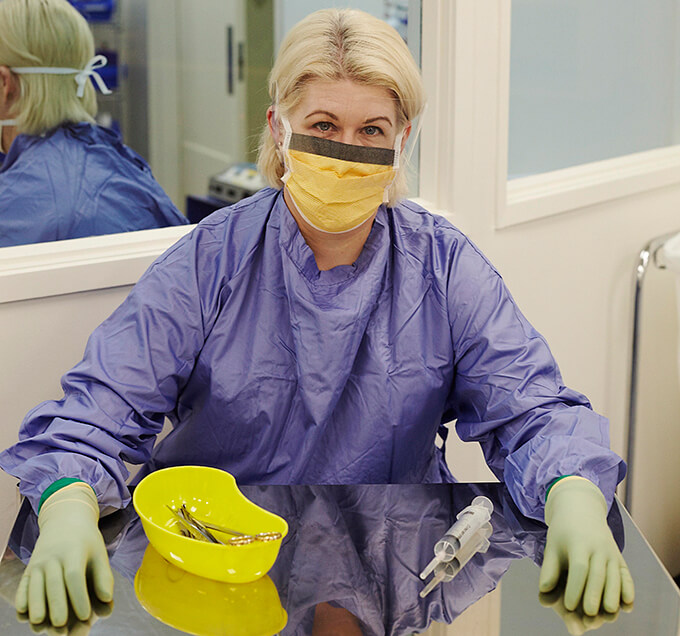
At 18, she left for Otago to study medicine. She says it was something she’d always wanted to do; there was no light-bulb moment. None of her family were medical.
“Those Patricia Cornwell books came out around that time, and I remember thinking, ‘they sound fantastic.’ I can’t stand them now because they’re so far-fetched and ridiculous, but at the time, they were highly entertaining. Anyone that’s related to her or works with her is either a serial killer, the victim of a serial killer, or somehow tied up with finding a serial killer. She’s just bad news.”
After six years of medical study, Glengarry graduated in 2003, then completed two years of surgical study before realising it wasn’t her passion. “I worked out pretty quickly that working 100-hour weeks wasn’t good for me, physically or mentally.”
A surgeon suggested pathology, and she thought, okay. Five years of specialist pathology training followed, eventually leading to autopsy pathology, which she found she loved.
“I kept pestering the clinical director. I’d turn up on Saturday mornings, when routine autopsies were done, or if there was a homicide, and say, ‘Can I come in?’” This persistence eventually led to a position at the mortuary, where she was able to finish her fellowship. Two more years of training, one in Auckland and one in Melbourne, and she was fully qualified.
“I started university in 1998 and got my final qualification in 2014. Didn’t seem like a long time, at the time,” she says, dry as you like.
“Decomposition can mimic all sorts of concerning things,” Glengarry says, matter of fact, before a smile appears. “All sorts of murderous things. When bodies start to break down, liquid can come from the body, often that liquid is red, and people assume it’s blood. When people find bodies in a pool of blood, they quite rightly tend to find that concerning. Like this young woman, who died after her birthday party. They called me out to the scene: no injuries, but with that level of decomposition? Absolutely. She’d actually died from liver disease, probably as a complication of her obesity. She’d been there for about a week. At room temperature.”
She pauses, reflective. “Australia was worse. When I arrived, Melbourne was having a 40-plus-degree heatwave. People were dying from the heat. I got used to seeing decomposed bodies. You normally have a good idea at a glance whether foul play was involved. What it involves is a thorough investigation of the body at the scene, which requires someone to help you, just a roll so you can look at the back. There’s generally a reluctance of everybody at the scene to want to help. It’s not pleasant.”
She gives me a keen look. She knows I am squeamish, and I get a sense that she’s enjoying herself. “There are flies. Thankfully, there are a bunch of hard-core police, nothing fazes them anymore, and they have all the proper equipment. That’s the problem — you’ll get a detective in his nice crisp white shirt, shiny shoes, nice suit. The uniform cops don’t want their uniforms soiled either, because they’re going to go to some other crime afterwards and the last thing they want is to be smelling like a decomposed body.
“There’s really nothing you can do to make the smell any less. I’ve always likened it to Rotorua, which is no disrespect to Rotorua … But when you drive in, there’s that sulphuric smell. After a little while you no longer smell it. It’s the same with autopsies. They smell bad initially, then you really just don’t smell it any more. The problem is you begin to smell just as bad. Which is why we have such lovely hot showers.”
Death has a smell all of its own. Touring the mortuary, you are confronted with a ubiquitous aroma of hospital bleach and human decomposition. It’s what Glengarry calls “a unique smell that’s the same in every mortuary all over the world”. If some of the things seen in this room can only be guessed at, then the accompanying bouquets are frequently beyond description.
Ironically, Detective Inspector Scott Beard of the Auckland CIB describes Glengarry as “a breath of fresh air”.
The relationship between the police and the mortuary is a special one. Because their combined work links directly to the evidence presented in court, there is absolutely no room for error. They work in a close partnership, along with the coroner. Yet somehow it feels deeper than that. There’s an unspoken understanding between them around the nature and importance of the work. Should you have the misfortune to be murdered, these are the people who will be seeking justice for you and your loved ones left behind.
Glengarry has a strong relationship with the Auckland CIB in particular. Beard is full of respect for her work. Senior detectives are notoriously inscrutable, but he is surprisingly open with me over coffee in an empty food hall. He describes Glengarry’s work as exemplary. “We work in partnership with a lot of groups — ESR, forensic pathologists — if we have a homicide or an unexplained death. And Joanna is really good. She’s always got a smile, and while the nature of the work is quite macabre, she’s very accommodating. If in the middle of the night we have an unexplained death, which we will treat as a homicide scene, we call her and she’ll come out, give an opinion. She’s very easy to work with.”
He lowers his voice. “I’ve been at post-mortems with her, some of them very macabre or bizarre, but she knows what she’s doing. She doesn’t leave things unturned, she doesn’t miss a beat. But that’s what we expect, because she’s the expert. I often have a lot of questions which she is quite happy to answer. It’s the unexplained ones where they really have to work hard and concentrate to find out [the cause]. It’s easy when you see a knife in the heart, or they’ve been shot. They do a lot of work after the post-mortem, researching, testing, toxicology work.
“In the medical profession, sometimes there’s no wrong or right answer, so it can be perceived they’re sitting on the fence. People will say, ‘What was time of death?’ The time of death, the pathologist will tell you, is between the last time the person was seen alive and when they were found dead. That’s the range. They’ve got to be careful, because if they commit, and they get proven wrong, then their credibility’s gone.”
The first thing Sergeant Heather Ruddell of Auckland police coronial services noticed about Glengarry: “She wasn’t arrogant.” Ruddell echoes Beard’s comments about Glengarry’s availability, approachability, professionalism and humour.
“There was the time we located a skull on Waiheke. We should have phoned her, but we didn’t. We transported the skull to the mortuary. It was found to be a six kilogram concrete replica. She phoned us to say, ‘Really? You couldn’t work that one out on your own?’ Someone was a bit over-keen. Then she sent me a Google link to where I could buy one for myself.”
Glengarry really enjoys the crime-scene work. “In any suspicious scene you go to, there will always be either a box of [cask] wine or some of those RTD bourbon and Cokes. That’s always a sign that something bad has happened. Admittedly, I see a bit of a skewed population.” She grins. “But going to crime scenes is always fun. Particularly if the police aren’t expecting me.”
Ruddell bristles about the occasional sexist treatment Glengarry has endured from some of the older CIB officers. “One officer asked her when the mortuary was going to send a real pathologist instead of a nurse.”
Glengarry says other times, uniformed officers have approached her behind the tape, horrified at her presence. “‘Miss! Miss! You can’t be here. This is a crime scene, you’ll have to leave.’ I don’t know what it is about me, they insist on calling me Miss.” Until they notice the senior detectives laughing. “I gently explain that I’m Dr Glengarry, and I’m the pathologist. I can see the conflicting emotions crossing their face.”
Glengarry would like to see more women in senior medical positions. She believes firmly in meritocracy, but concedes, “I can be flippant about it because of the work other people have done in the past. So maybe I am a feminist. It’s all about how you define it.”
Ruddell says most people still perceive pathologists as being men. “She is rare in her field. She has a huge volume of work. She’s had no life … doing the jobs of two people and more, managing and keeping up with that workload. Making sure the families got their answers.”
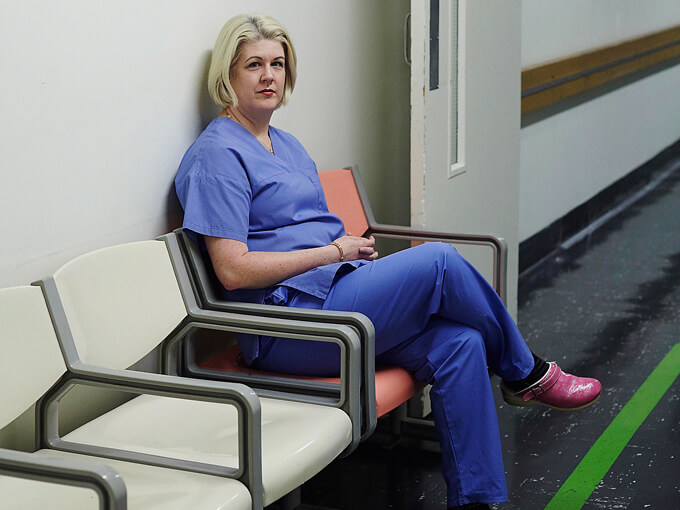
The situation has improved before Glengarry leaves. “We’re in a good space now,” she says. “We’ve had new staff come on board. We’ve had very good support from some of managers at [the Auckland District Health Board]. They realised how dire the situation was and have been very supportive.” Yet she’s still leaving for Australia? “That’s separate. It’s because the system is in a really good place I can leave.” She’s been swayed by the opportunities on offer. “I’m leaving for my own ambition. I was offered a job at the biggest institute in Australasia, and the career opportunities there are huge.”
I wrestle with the incongruity of performing an autopsy to Justin Bieber or Kendrick Lamar.
“Music gets me through,” Glengarry says. She also finds reading therapeutic. “Escaping into worlds other than this one we all live in. The best feeling is finding a good book and realising it’s part of a trilogy.”
Back in the real world, there’s another coping mechanism, a deeply black sense of humour no one who works on crime scenes wants to discuss. Eyes slide sideways, feet shuffle. They worry outsiders would find it inappropriate. It’s a sensitive subject, even more so after a New Zealand Herald story in May about allegations by a mortuary staff member and a former staff member of bullying and a lack of respect towards bodies.
Glengarry is adamant her colleagues are professional and respectful, and that any excesses are well in the past, back in the “bad old days” when new police officers and autopsy attendees with weak stomachs made particular targets. I’ve been told stories of police hiding in the fridges and jumping out at their junior colleagues. Of unpleasant gasses being directed at an unsuspecting officer or student at the moment of incision.
Glengarry has seen her fair share of people needing to step outside once an autopsy is under way. But she’s emphatic that her theatres and crime scenes are not an episode of Fargo. Any black humour is directed only at the professionals involved, never the deceased, she says. Claire Barker, a forensic pathology technician with Glengarry at the Auckland mortuary, tries to explain. “There’s not a day that goes by that we’re not joking about something that people out of that context would not joke about, but it’s just a coping mechanism. We do it with respect.”
Glengarry says respect for the patient remains paramount. “I see myself as the person’s last doctor. They can’t speak any more so it’s up to me to tell the story of what happened. Sometimes it’s to provide answers for the family, so they know, sometimes it’s providing knowledge and information to the police and the courts so they can bring [someone] to justice. It’s not up to me to arrest the person, and in court we are independent experts, so it’s not up to me to avenge the deceased. But it is up to me to tell their story.”
All that death. Are there cases that really get to her? “Children,” she says, no hesitation. “Particularly school-aged children. Death in that age group is extraordinarily rare. Kids don’t normally die. It’s always hard. I had one little boy, he had his school uniform on, his little polo shirt, and awful injuries from a car accident. He was a lovely-looking little kid. I find those the most challenging cases emotionally.”
Does it leave her in tears? “There’s been a couple. They come on unexpectedly. We spend so much time insulating ourselves emotionally, it’s actually reassuring to know we’re still human underneath, that we still feel. So you think, that’s okay, that’s good. But then you have to move on from it: I’ve got that out of my system, now I’ve got to do my job. Am I emotionally scarred for life? No. But it does happen. There is burnout.
“I’ve had discussions with colleagues where they’ve been affected by a case, and they never saw it coming. Didn’t predict that would be the one that would hit them. We’ve got good support networks, but I think a lot of it comes down to having good friendships with colleagues. The best therapy is going out and over a glass of wine having a bit of a chat.”
For someone whose job is to tell the last stories of the dead, Glengarry is remarkably vital, says Barker. “She has phenomenal taste in shoes, even working in theatre. We’re all wearing department-issued gumboots, black or white, steel capped, industrial-grade soles. But hers are bright red.”
Next stop, Melbourne. “She’ll be sorely missed,” Ruddell says. “It’s very hard to get women in these positions, and then when you get one, you lose one. It is a shame. Some families find it better dealing with a woman. For me, it was good to have another female there. She brought a different dynamic to the mortuary.” Barker agrees. “It will be a real loss when she goes, but I know it’s an amazing opportunity for her.”
Glengarry is philosophical. “I want to develop myself professionally so that at some stage in the future, should the opportunity arise to come back, I’ll be able to. I don’t want to have only ever worked here and not seen how it can be done elsewhere. New Zealand’s home. I’ll come back in the future. But I need to go now and spread my wings.”
This is published in the July- August 2017 issue of Metro.

